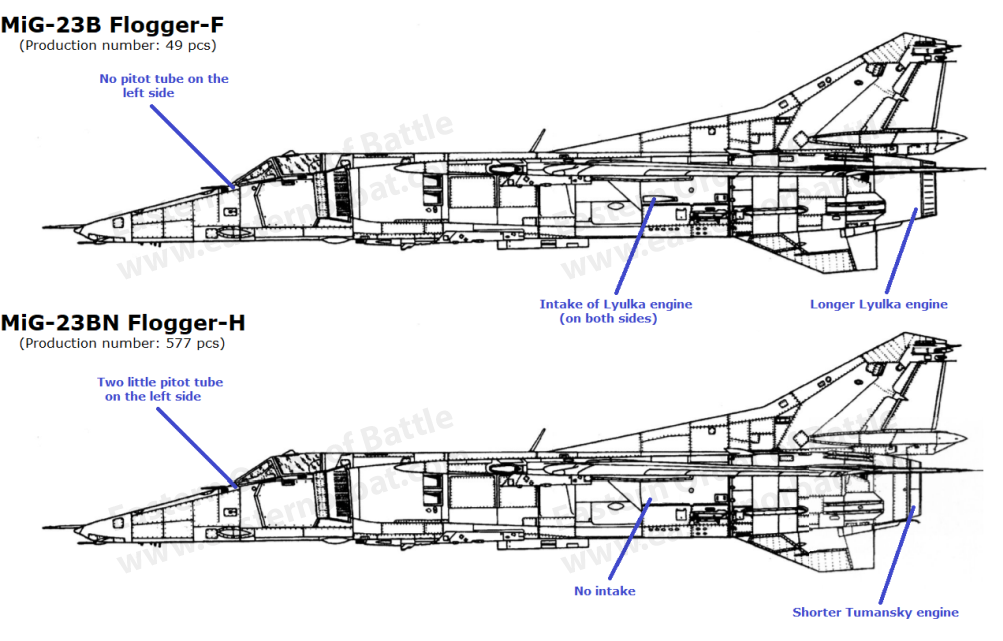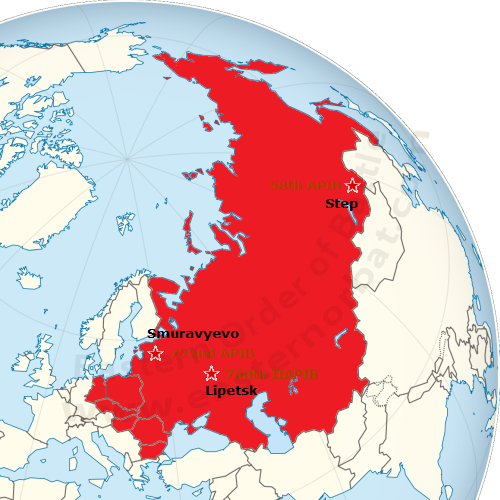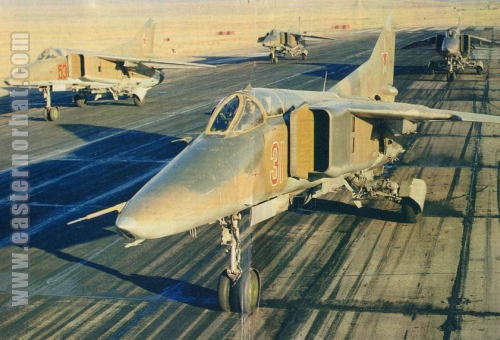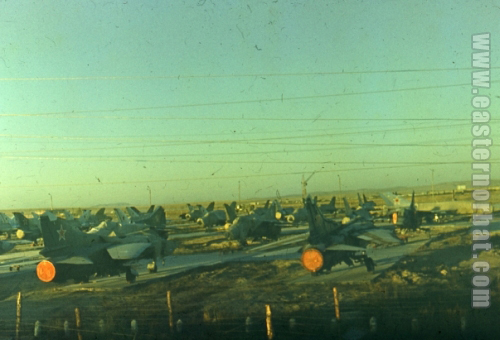|
The Soviet Tactical Air Fore needed a new fighter-bomber type in the second half of the sixties. The Su-7 Fitter-A nuclear strike and MiG-17 Fresco-A close air support types had to be replaced in the late sixties and early seventies.
The Sukhoi Design Bureau recommended an upgrade for the Su-7 type. Manufacturing for the new Su-17 Fitter-C started in 1969. The Mikoyan OKB was running out of time, so they also didn't develop a new type. Their new MiG-23 Flogger fighter was transformed into a bomber.
The Mikoyan OKB created three MiG-23B prototypes in 1971. Then the Lukhovitsy factory produced 49 pieces of MiG-23B Flogger-F fighter-bomber aircraft between 1973 and 1974. Unfortunately, few Lyulka AL-21F3 engines were available, so since 1974, the MiG-23BN Flogger-H type was already manufactured with Tumansky R-29B-300 engine.
Mikoyan-Gurevich MiG-23B Flogger-F fighter-bomber production:
1971: 3 pcs (prototypes)
1972: 20 pcs
1973: 29 pcs
The first three MiG-23B Flogger-F fighter-bomber aircraft arrived at the 760th Research Instructor Fighter Bomber Air Regiment at Lipetsk airport on May 30, 1973. Here they continued the airplane type tests and began the retraining of instructor pilots.
The 722nd regiment was the first active Soviet fighter-bomber air unit using the MiG-23B Flogger-F type. Between 1973 and 1974 it received 36 pcs factory new MiG-23Bs. In 1974, the 760th regiment passed down four more second-hand MiG-23B tactical bombers.
|







